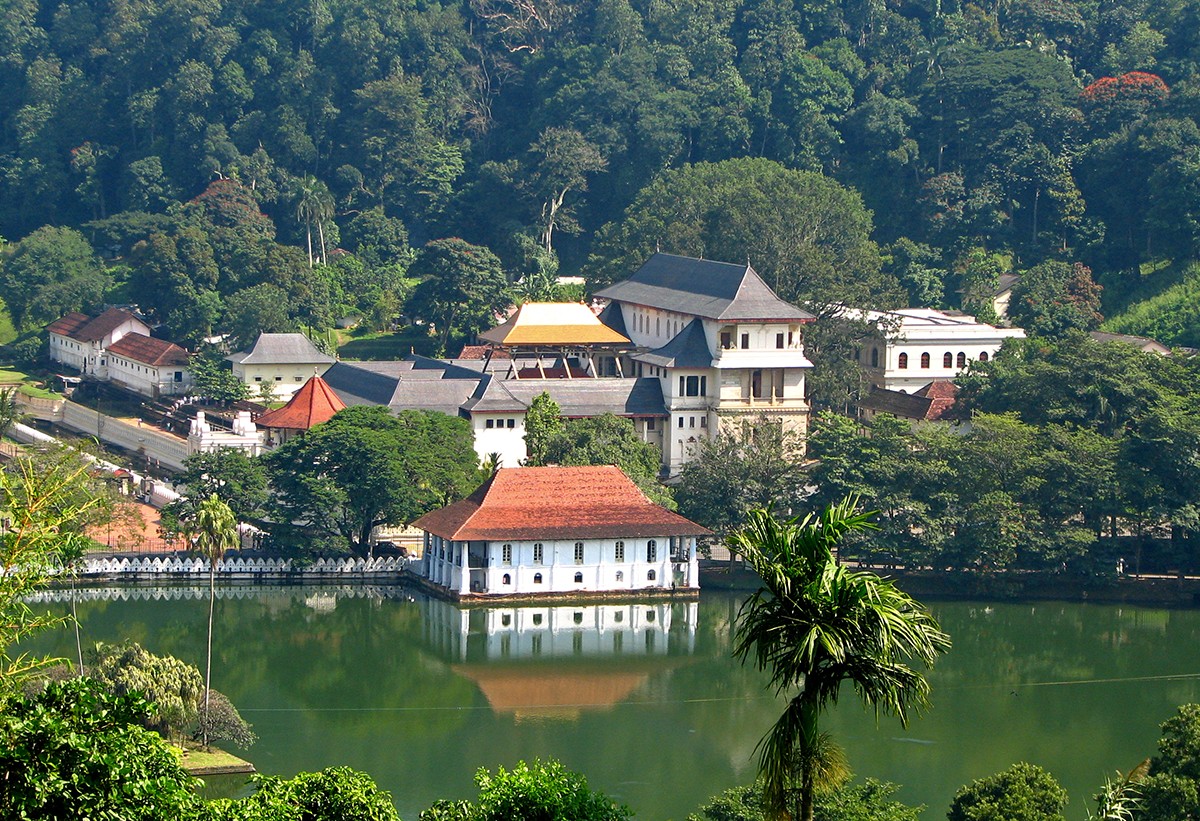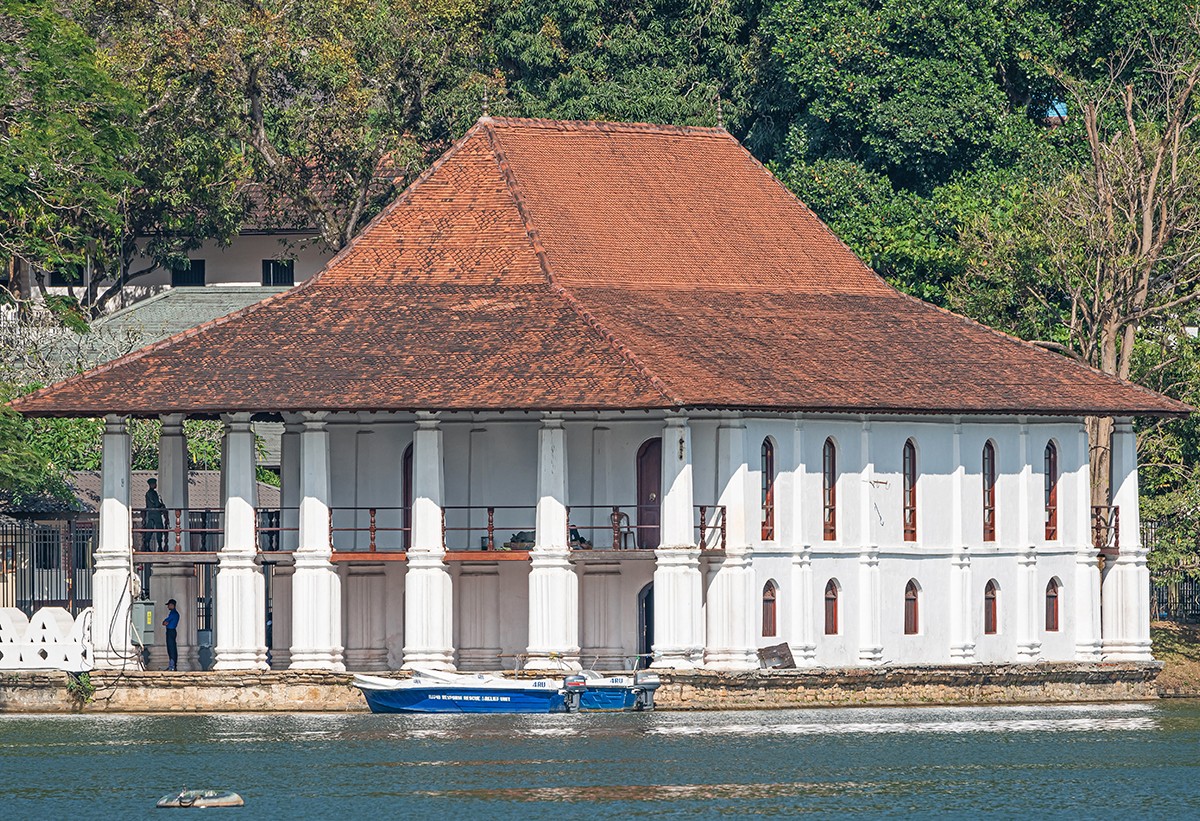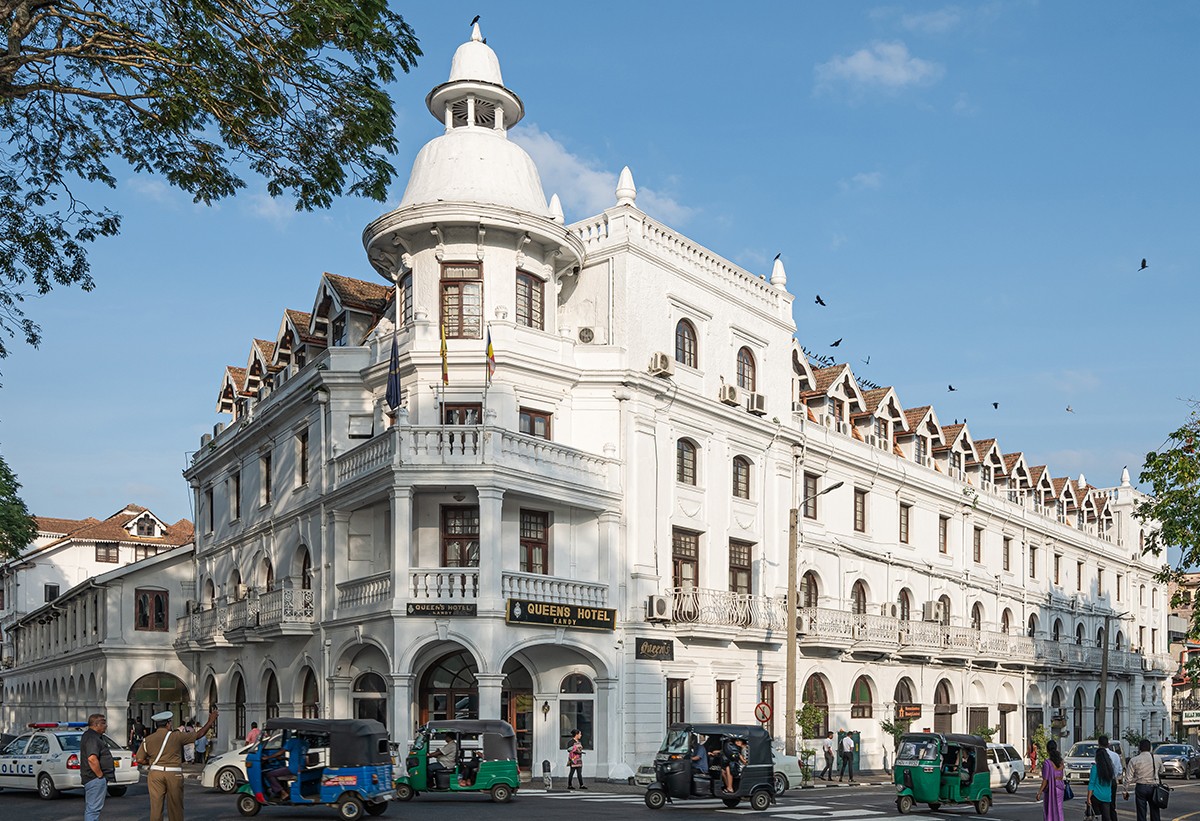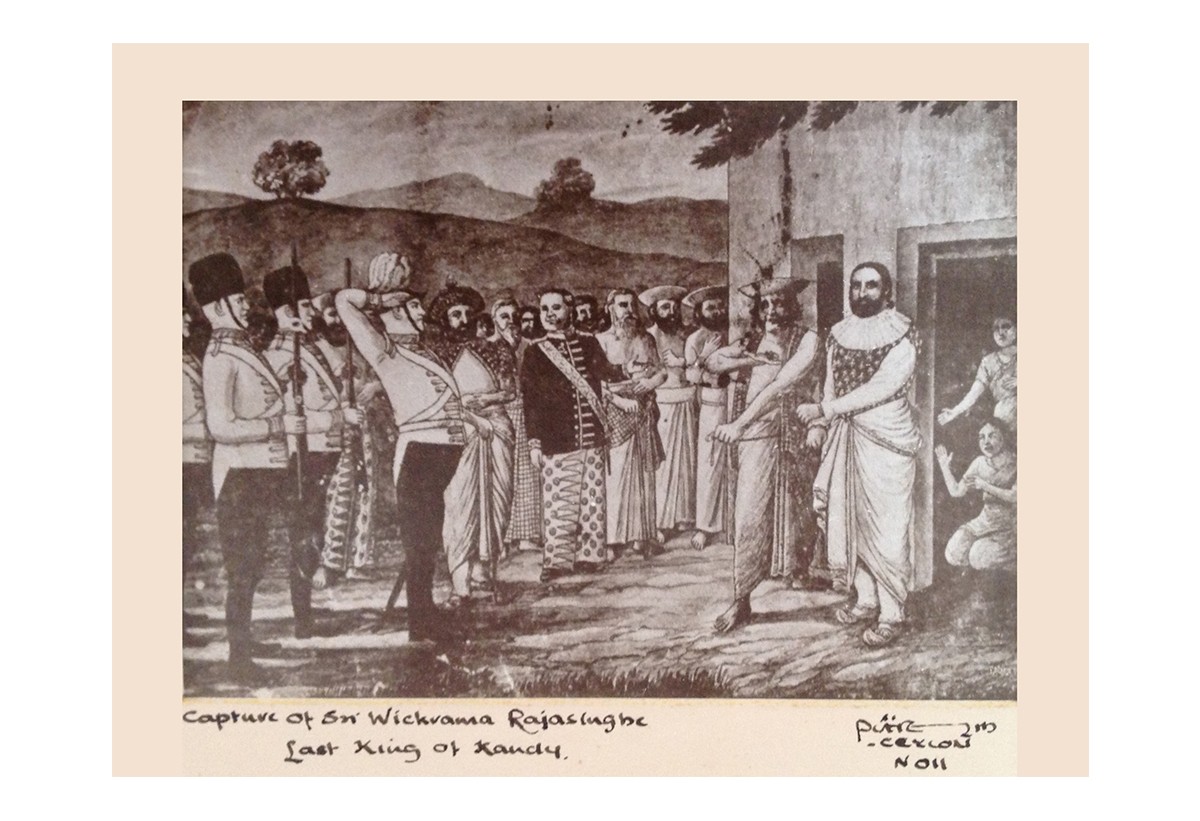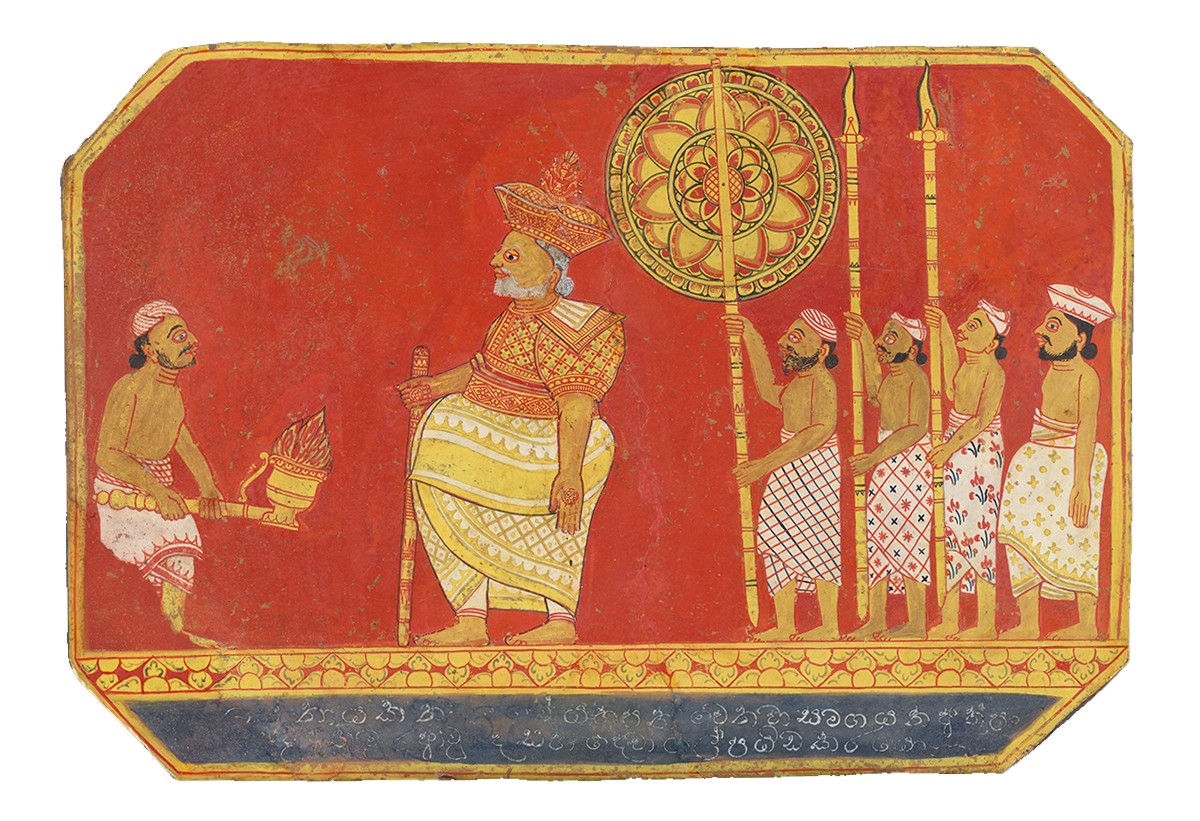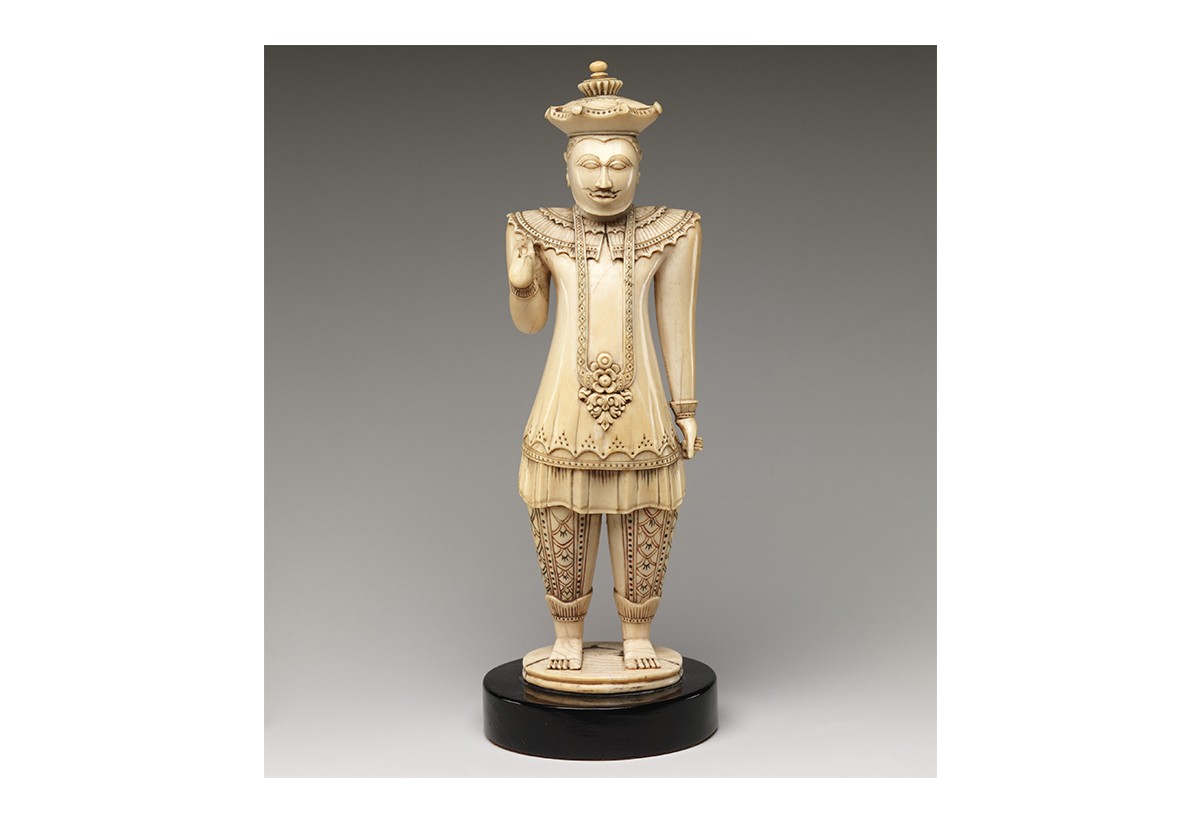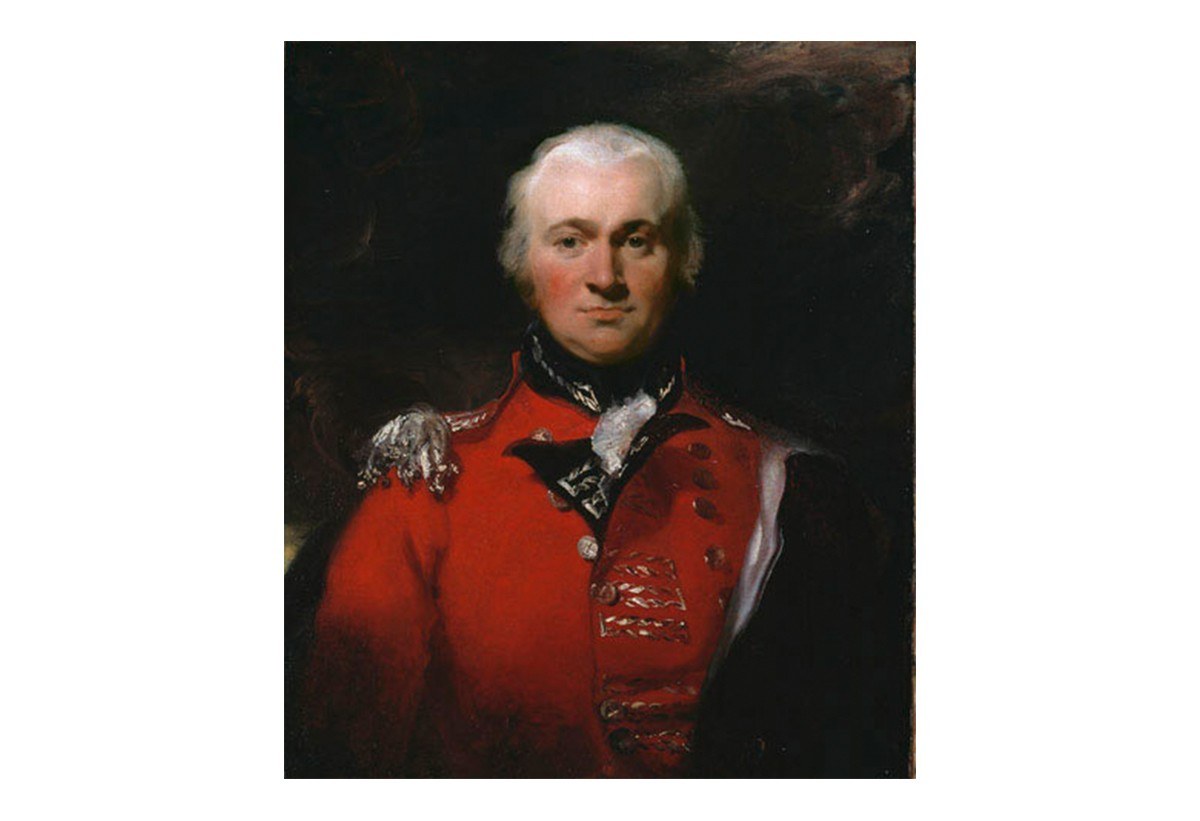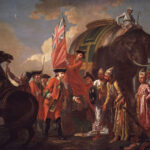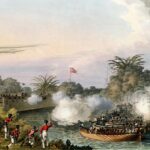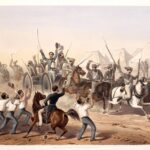British Rule Is Established at Kandy
1815
After multiple failed efforts in previous years, British forces occupy the capital of the Kandyan kingdom in present-day Sri Lanka. With the crucial assistance of ministers disaffected with the reigning Sri Vikrama, they manage to capture the king and exile him to India, and reinstate the Relic of the Buddha’s Tooth to its shrine. A crucial cultural and religious artefact for Sri Lankan Buddhists, often closely associated with the right to rule, the relic was hidden away in the remote countryside by Sri Vikrama shortly before the occupation, but is retrieved within six weeks by British officials.
A mix of local rumours and British propaganda against Sri Vikrama has been building up in Kandy over the last few years, criticising his increasingly violent and oppressive rule, his liberal use of corvee labour for grand but cosmetic infrastructural changes to the city of Kandy, and highlighting his Hindu Nayaka lineage and customs as ‘foreign’ to the Buddhist Sinhalese majority of the population.
The British Crown, with its ascendancy over Kandy, also comes to operate as the protector of the Tooth — an unusual association for colonial rule in South Asia. This is moreover explicitly confirmed in the Kandyan Convention, creating a legal obligation for the British rulers to protect the Buddhist spaces and practices of the local population.
Bibliography
Coomaraswamy, Ananda K. Mediaeval Sinhalese Art. New York: Pantheon Books, 1956.
Sivasundaram, Sujit. “Cosmopolitanism and Indigeneity in Four Violent Years: The Fall of the Kingdom of Kandy and the Great Rebellion Revisited.” In Sri Lanka at the Crossroads of History, edited by Zoltán Biedermann and Alan Strathern, 194–215. London: UCL Press, 2017.
Strong, John S. Buddha’s Tooth: Western Tales of a Sri Lankan Relic. Chicago: University of Chicago Press, 2021.
Feedback 
This entry appears in
Art in South Asia
Visit Timeline
Associated Timeline Events
First Published: March 11, 2024
Last Updated: July 2, 2024



